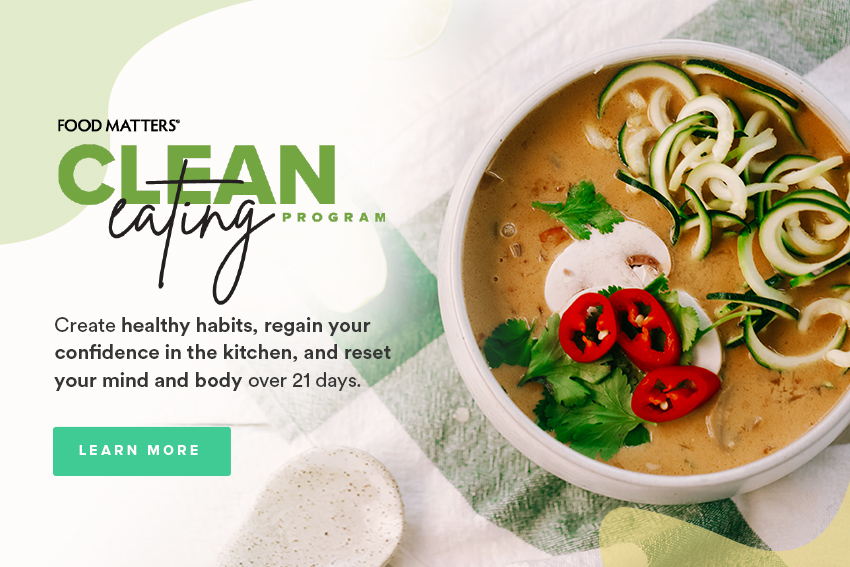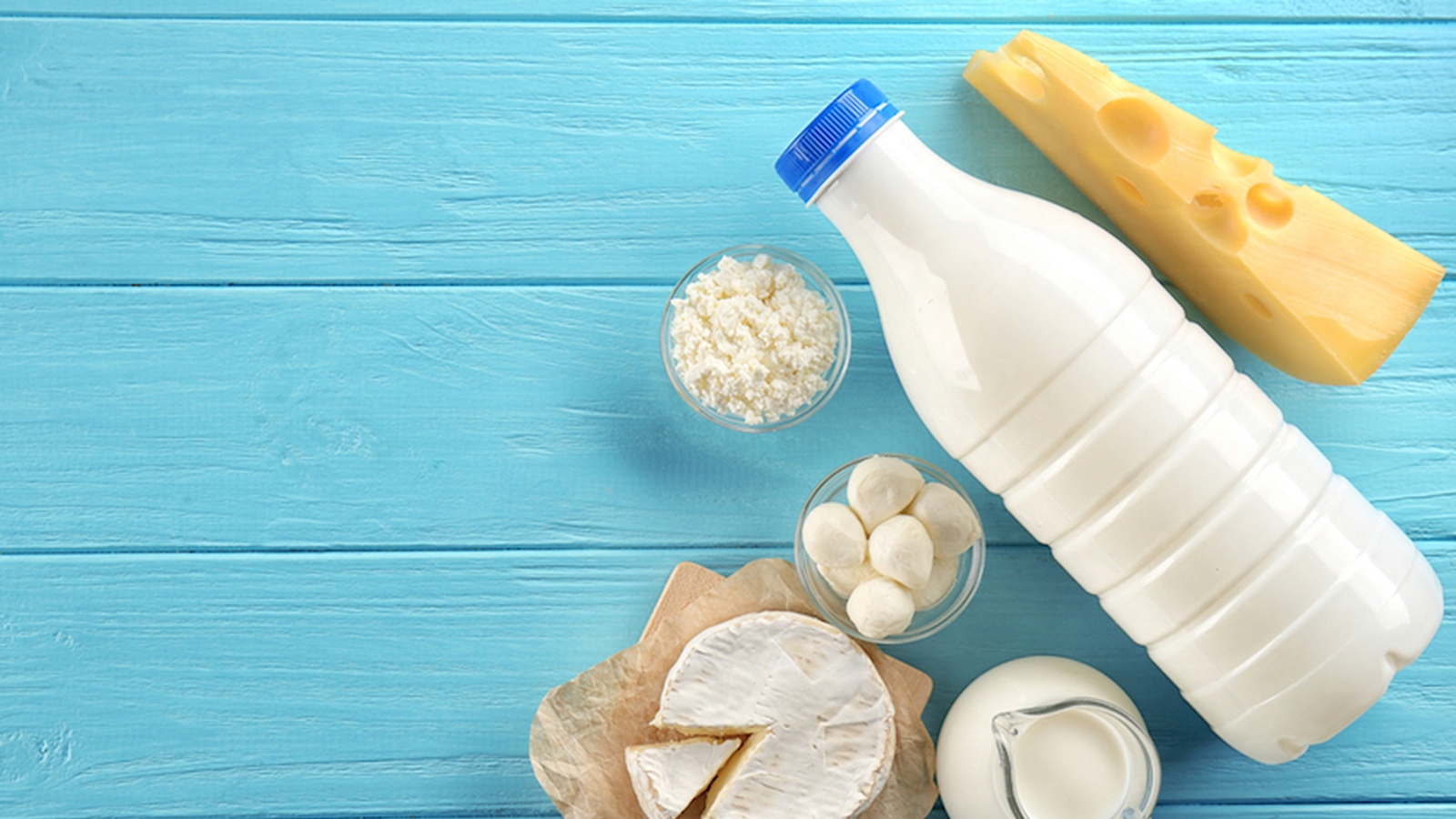Why You Don’t Need to Drink Milk to Get Enough Calcium
Calcium is an essential nutrient required from food to help our bodies do their ultimate job - keep us alive and healthy. Although we commonly associate calcium with bone and teeth health, it has many other very important roles in the body. Drinking milk and consuming other dairy products has, for a long time, been regarded as the best way to obtain this dietary calcium. Well guess what? You don’t need to drink milk to get enough calcium! There are plenty of other foods that are high in calcium and many of these are actually higher than dairy products. In fact, dairy products are actually being linked to causing health problems rather than making you healthier.
So what is all this controversy about and do we have to drink milk to get enough calcium?
What is Calcium?
Calcium, one of the most abundant minerals in the body, plays an important role in bone health, blood clotting, muscle function, and nerve communication, as well as supporting a healthy heart rhythm. Only a small proportion of calcium circulates in our blood whereas the rest of it is stored in our bones for bone function. Fortunately, our bodies maintain a tight regulation of the calcium that can be found in our blood and can release calcium stores from our bone reserves when it is needed. Unfortunately, if the body isn’t getting enough dietary calcium, stores in the body can deplete and cause serious health problems. This can lead to a condition in children known as rickets, and osteoporosis in later life. Osteoporosis, in particular, is a major public health threat and, along with low bone mass, currently affects over 44 million men and women over the age of 50 in the USA, which is over half of the US population.
Lastly, but most importantly, in order to absorb calcium efficiently the body also requires adequate amounts of vitamin D and magnesium. For example, magnesium is used by the body to convert vitamin D into its active form, and this vitamin D then promotes calcium absorption.
How Much Calcium do we Need?
The dietary intake recommendations for calcium in America are highlighted in a set of reference values that vary dependent on the population group. The RDA’s are one of these sets of reference values, representing the average daily level of intake that is sufficient to meet the nutrient requirements of almost all healthy individuals (97% - 98%).
The Recommended Dietary Allowance (RDA) in mg per day for calcium are:
|
Age (years) |
Recommended Dietary Allowance (RDA) |
|
9 - 18 years |
1300 mg |
|
19 - 50 years |
1000 mg |
|
Females over 50 |
1200 mg |
|
Males over 50 |
1000 mg |
|
71+ years |
1200 mg |
However, these recommendations are questionable in that they are most definitely not universal as they are based on Americans, who have some of the highest rates of non-communicable diseases in the world. In the UK, for example, their guidelines for adults state that 700 mg should be sufficient, and the World Health Organisation states that 500 mg a day is enough to maintain health; but they also allow for calcium losses and increase this recommendation to 800 - 1000 mg per day. These increased calcium losses are most often attributed to diets that are acidic and high in sodium, animal protein, and processed foods, which the majority of diets in the USA are based on.
What’s Wrong with Drinking Milk?
“Drink 3 glasses of milk a day for strong bones and teeth!” This is a slogan many of us are familiar with and, frankly, most of us swear by. But how much of this is evidence based? Is this just common knowledge based on major marketing schemes by the dairy industry? In fact, there is little research linking milk directly with these positive outcomes and the dairy industry spends 100s of millions of dollars every year in advertising and research that supports their claims - which for the most part promotes milk as a nutritious source of calcium that can help you avoid getting bone-crippling osteoporosis. However, there are stacks of research on what causes this condition and ironically, one of them is a diet with excess dietary protein, which milk is high in. Regardless of how many calcium-rich foods you eat, if they are also high in protein the greater the risk of a negative calcium balance will be and the higher the loss of calcium.
In addition to this, the consumption of dairy products like milk creates an acidic environment in the body which triggers the release of calcium from the bones to buffer out our blood and bring our pH levels back into balance. In doing so, calcium is lost in our urine causing a deficiency and increasing the risk of developing osteoporosis. Interestingly, many populations of people around the world who don't drink milk or consume dairy products actually have very low incidences of osteoporosis compared to some of the populations with the highest consumption and highest incidences of the condition.
Can’t I Still Drink Milk?
Of course you can! Milk is still a great source of calcium. Just be wary of the types you are drinking and take into consideration those animal rights. We recommend drinking raw organic milk. This means milk that has come from grass-fed cows, is unhomogenized, and unpasteurized. When milk is pasteurized it destroys loads of the nutrients that made it beneficial in the first place. This process is done to kill any harmful bacteria that may be present, but in doing so it also kills the good bacteria. In fact, the risk of getting sick from the bad bacteria is very low and usually occurs in conjunction with another health problem.
6 Non-Dairy Calcium-Rich Food Sources
Many people, for a variety of reasons, don’t drink milk regardless of nutritional reasons. Some cultures do not use milk or it simply doesn’t exist for them, vegans avoid all animal products, and a growing number of people are lactose intolerant (this simply means they lack the enzymes required to break down the sugars in milk), whereas others just simply choose not to drink it. Believe it or not, you don’t need milk to get enough calcium and these people still meet their calcium needs. There is no denying that milk and other dairy products contain a high amount of calcium, but only 30% of this is actually absorbed; plus they are also high in sugars and protein. Luckily, there are other calcium-rich foods that are not only healthier but are also high-alkaline foods free from animal proteins.
1. Leafy Greens
Get your greens from a leafy plant-based diet! Among these vegetables, bok choy, kale, parsley, broccoli and watercress are great sources of available calcium, of which more than 50% is absorbed. Along with the well known benefits of eating your greens, these vegetables are also high in magnesium, which we know is essential for healthy absorption of calcium. Beware that some dark leafy greens, especially spinach and silverbeet, although calcium rich also contain oxalates that can bind to calcium and interfere with absorption.
2. Sardines
For a sustainable animal source try sardines with the bones! They are packed full of calcium and vitamin D, with a whole 350 mg of calcium in just one 100 g serving. If sourced from sustainable fisheries, these small fish are a great alternative to some of the bigger, less sustainable fish. Oysters, tuna and salmon are also rich sources of calcium, but make sure you look out for that sustainability stamp.
3. Rice Milk & Other Milk Alternatives
There are plenty of non-dairy milk varieties that have been fortified with not only calcium but also vitamin D, allowing you to enjoy your usual milk beverages while providing your body with up to 30-40% of your daily calcium requirements. These drinks include calcium-fortified rice, almond, soy, oat, coconut and hemp milk. Just make sure you check the food labels because sometimes they aren’t fortified or they have added sugars.
4. Seaweed
Some seaweeds such as nori, which is popular in Japanese culture, are a great source of calcium. Other varieties high in calcium include agar, kelp and wakame and contain up to 10 times more calcium than milk, along with loads of essential vitamins and minerals. Now that’s a nutritious punch.
5. Almonds
Although there is calcium in other nut varieties, almonds have the highest amount! They are a great addition to anybody's diet delivering a host of different nutrients that will keep your skin glowing (vit E) and your bowels moving (fiber).
6. Sesame Seeds/Tahini
Sesame seeds are an extremely nutritious source of calcium and unhulled sesame seeds are even better. Tahini is a spread made from ground sesame seeds and goes great spread on your whole-grain toast or mixed through a salad.
Other nutritious sources of calcium include tempeh, edamame beans, figs, white beans, and spirulina. A well-balanced whole-food diet that includes a variety of these plant-based foods can provide your body with plenty of calcium to meet all recommendations, plus a hit of nutritional goodness.
Therefore the answer is ‘NO’, we don’t need to drink milk to get enough calcium. We don’t need to drink milk at all!
Take the stress out of cooking with 21-days of guided meal plans, shopping lists, and nutrition support. You’ll find all of this, and more, in our signature Clean Eating Program.


